Universities to Race Human Powered Submarines
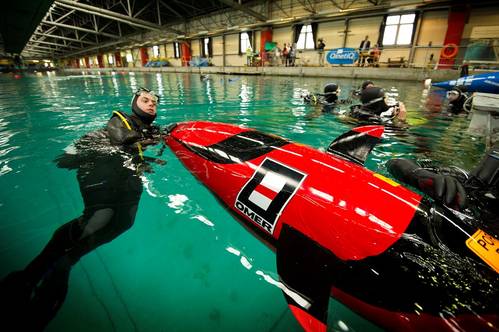
École de Technologie Supérieure (Quebec, Canada) team's submarine Omer 8 was the overall winner in 2012.
Twelve teams from universities in six countries on three continents will meet in July 2014 to take part in the second biennial European International Submarine Races (eISR) at QinetiQ’s Ocean Basin in Gosport, U.K., the biggest covered water space in Europe.
This exciting week-long event from July 7-11 is a unique sporting and engineering challenge. It tests the students’ engineering skills, for every human powered submarine taking part is designed and built by the university concerned with vital amendments and adjustments and even rebuilding taking place during the week. It also tests sporting prowess and stamina as the teams race against the clock with the pilot wearing SCUBA gear and pedaling underwater around a demanding slalom course in the tank measuring 122 x 61m and 5.5m deep.
Teams competing for the 2014 awards are: École Polytechnique de Montréal, École de Technologie Supérieure and University of British Columbia all from Canada; Rhine Waal University of Applied Sciences from Germany; University of Delft from the Netherlands; University of Auckland from New Zealand; University of Michigan and University of Washington from the USA; and four teams from the UK with University of Bath, University of Plymouth, University of Southampton, and University of Warwick.
“There were just six teams at our inaugural races in 2012, so it is highly rewarding to see a dozen (our top limit) registered already, with three more universities on the waiting list in case of any last minute dropouts,” said Race Director, Prof William Megill, FIMarEST
Encouraging innovative design
“Naturally, we want the members of our teams to have a highly enjoyable week at the races and our networking events will help them do that; but they know only too well that the overall objective of the eISR is to encourage innovative design in submarine engineering,” he added. “Past teams, comprised of multi-disciplinary engineering students, have designed a wide variety of exciting machines, propelled either by standard rotating propellers, or by novel non-propeller thrusters.
“Regardless of the propulsion system selected, the basic design and build process boils down to five components: hull, propulsion, transmission, pilot safety and ergonomics, and control. The levels of sophistication applied to all of these components are up to each team - it is possible to do well with just a hull, some fins, and a recycled bicycle, but to really excel requires some serious thought and careful manufacturing, and of course, the submarine must be finished and functioning for that all-important week in July.”
The eISR is organized by the Institute of Marine Engineering, Science and Technology in partnership with QinetiQ; and the eminent judging panel is headed by Vice Admiral Sir Robert Hill, KBE, FIMarEST.
Sarah Kenny, Managing Director, QinetiQ Maritime, said, “QinetiQ is delighted to be hosting the second eISR event at our Ocean Basin in Haslar this Summer. The Ocean Basin is the perfect setting to hold the event at which innovation, design and test is at the very heart. Events like this are vital to inspire young people to consider pursuing engineering and maritime disciplines, showing the huge breadth of experiences and skills that can be achieved in this area. Last year’s event was exciting, inspiring and a huge amount of fun to be a part of - everyone at QinetiQ is very much looking forward to supporting the event again this year.”
“We are delighted that this year’s eISR has attracted twice as many teams as the inaugural event in 2012, and with a superb geographical spread,” said David Loosley, Chief Executive of IMarEST. “We are extremely grateful to QinetiQ for their wholehearted support and for the use of their facilities and input by their team of experts – without them the event just couldn’t happen. This is very much a joint effort and we are all looking forward to a highly stimulating, exciting and rewarding week.”
Careers Fair and Underwater Technology Master Classes
“Undersea engineering is a fascinating, rapidly developing, growing area of technology desperately in need of new graduates,” added David Loosley. “Engineering firms are hiring all around the world, and the demand for energetic, enthusiastic new engineers is showing no sign of slowing down. It is not just classically trained marine engineers and naval architects that are required, but engineers from all walks of the field.
“The need is for adaptable individuals who can thrive in the multi-disciplinary teams that are designing and building ships, robots and machines to work in the hugely challenging underwater environment. For this reason, eISR incorporates a one-day Graduate Careers Fair and Underwater Technology Master Classes on Wednesday 9 July and also highlights the investment the Institute makes in supporting undergraduates and early career professionals.”
The day offers attendees – racers and visitors alike - the opportunity to hear about the challenges that flow through the in-and out-trays of working marine engineers. The Fair and Master Classes run alongside the Races, and will consist of a series of presentations by sponsoring companies, who will also have recruiters available to speak to young engineers. Participants in the Master Classes will also be welcome to visit the races. The eISR Underwater Technology Master Classes and Graduate Fair are open to anyone with an interest in marine engineering, but those that will benefit most from the opportunities are third and final year engineering students, as well as recent graduates of engineering programs – the full program of Master Classes will be available at www.subrace.eu by Spring 2014.
Encouraging the younger generation
Schools and engineering clubs in and around the Gosport area are invited to eISR. “We want to show budding young engineers just how exciting it can be to take a concept from the paper and computer stage right through every element of building and then put it to the test under competition rules. We’d like to inspire them to consider marine, and other forms of engineering, degree courses as a result of their eISR experience,” said William Megill. Interested schools and clubs should contact [email protected] for further information.
Full information
Full information on all aspects of the eISR including rules, layout of the course and visitor registration can be found at www.subrace.eu

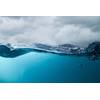
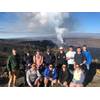

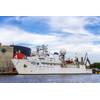
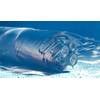
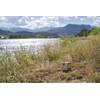








 February 2025
February 2025



